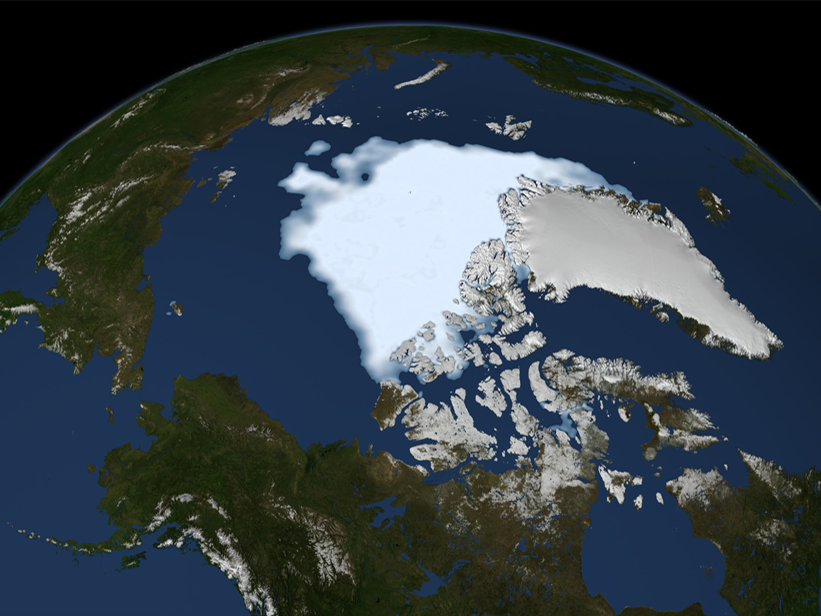Source: Global Biogeochemical Cycles
The breakdown of organic matter in marine sediments is a crucial ecosystem function that liberates energy and recycles biologically important nutrients. This processing of organic matter is typically quantified by the measurement of sediment oxygen demand (SOD), which is the rate of oxygen consumption by both biological and chemical processes in the sediment at the bottom of the water column. SOD is predicted to change as the loss of sea ice and an increase in freshwater runoff alter the Arctic Ocean’s patterns of primary ecosystem productivity.
Although individual SOD measurements have been gathered for decades across the Arctic, these data have never before been aggregated into one set and interpolated to fill in data gaps. To address this need and establish a pan-Arctic baseline, Bourgeois et al. compiled 1,154 previously measured values from 16 databases and 30 publications and used these data in four additive models to interpolate the oxygen demand in sediments across the Arctic Ocean.
Their results show that the flux of oxygen in Arctic marine sediments is highly dependent upon water depth, as has been documented in other regions, as well as on the supply of food available to bottom-dwelling organisms. Together, these two factors accounted for up to 59% of the observed variance in the team’s models.
The analysis also showed significant spatial and seasonal variations in oxygen demand in Arctic Ocean sediments. The continental shelves—which account for about half of the total area—exhibited the highest SOD values, whereas the deepest basins had the lowest. Differences were also evident between the different types of shelves. For example, inflow shelves—like the Bering, Chukchi, and Barents seas, which receive nutrient-rich water inflows—exhibited higher SOD values than the outflow shelves like the Canadian Archipelago and Greenland Sea, which allow the outflow of Arctic water into the North Atlantic.
Although this study represents an important step forward in understanding spatial and temporal SOD patterns across the Arctic, the authors caution that additional parameters not captured in their models, such as the structure and behavior of benthic communities, may also influence oxygen and nutrient fluxes. Additional measurements, including in the Russian seas and during the polar winter, will be necessary to corroborate these models and provide important benchmarks for understanding the response of organic matter processing to the Arctic’s rapidly changing climate. (Global Biogeochemical Cycles, https://doi.org/10.1002/2016GB005378, 2017)
—Terri Cook, Freelance Writer
Citation:
Cook, T. (2017), New baseline for understanding Arctic oxygen and nutrient fluxes, Eos, 98, https://doi.org/10.1029/2017EO079075. Published on 11 August 2017.
Text © 2017. The authors. CC BY-NC-ND 3.0
Except where otherwise noted, images are subject to copyright. Any reuse without express permission from the copyright owner is prohibited.

